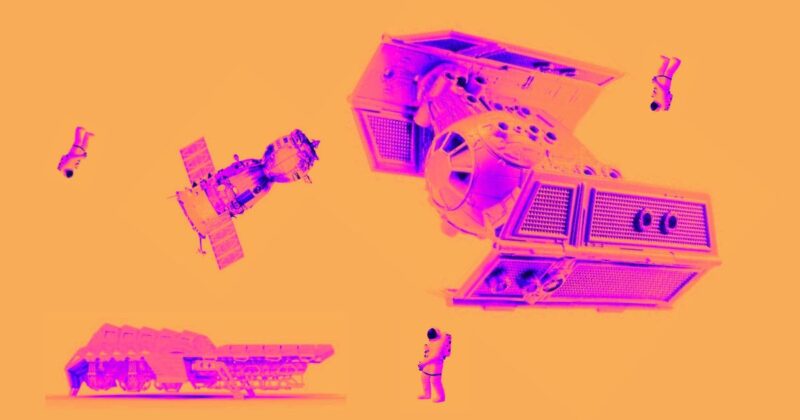Hi! It’s konkaz (@konkazuk) here.
In this article, we are going to explore the “solar system”, while also picking up related English vocabulary along the way.
Unless we have a personal interest in celestial bodies, I presume we rarely research such topics proactively.

Besides, in this day and age, whenever we open our mobile phones, a substantial influx of information of our interest that is curated by AI based on our past search data surges in.
However, learning about celestial bodies can lead to numerous discoveries.
Above all, when you compare your own existence to the vast scale of celestial bodies, worrying about trivial and insignificant matters can feel utterly foolish.
So, let’s gather some English vocabulary related to the universe right here.
What is the solar system?
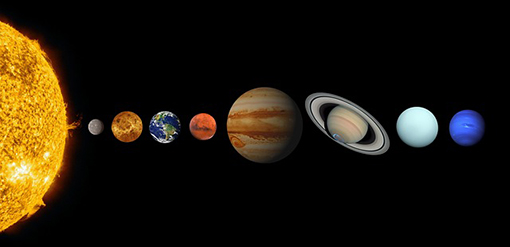
First of all, the term for “taiyo-kei” in English is “solar system” [səʊlə sɪstəm].
In Japanese, we also use terms like “solar power” or “solar panel” and they are the same “solar”.
Regarding the pronunciation of “solar” in English, if we try our best to approximate it in Katakana, it would be something like “Su-o-u-ra.” (“ra” does not go with English pronunciation though… if you know what I mean…)
The reason why it is called the “solar system” is that about 4.6 billion years ago, a swirling mass of gas and dust in space, known as a molecular cloud, gradually condensed, and as a result, the “Sun” was born in the denser central region. And over time, the remaining gas and dust coalesced to create planets like Earth in its vicinity.
So, you can understand it as the “Sun as the boss and its entourage.”
The main planets that formed around the Sun, as you can see in the image that is being featured earlier, are the following eight planets in order of proximity to the Sun.
🔹 Mercury [mɜːkjəri] = Suisei
🔹 Venus [viːnəs] = Kinsei
🔹 Earth [ɜːθ] = Chikyu
🔹 Mars [mɑːz] = Kasei
🔹 Jupiter [dʒuːpɪtər] = Mokusei
🔹 Saturn [sætən] = Dosei
🔹 Uranus [jʊərənəs] = Tennousei
🔹 Neptune [neptʃuːn] = Kaiousei
Some of you might vaguely recall learning something like “Sui, Kin, Chi, Ka, Moku, Do, Ten, Kai, Mei…” back in school days, but hey…. Don’t you realize that there seems to be one extra here?
Pluto [pluːtəʊ], the “Mei” was discovered in the early 20th century, and it initially had been recognized as the ninth planet. However, over time, various facts came to light, and in 2006, an assembly of astronomers from around the world gathered for a conference, and as a result, Pluto was reclassified and removed from the category of planets in the solar system.
The reason for this is that Pluto’s orbit [ɔːbɪt] deviates from the nearly flat orbits of the other eight planets. Additionally, many other celestial objects, beyond Pluto, were discovered later on and the characteristics of these were distinct from those of the original eight planets. As a result, Pluto was excluded from the group of planets.
Is the moon a planet?
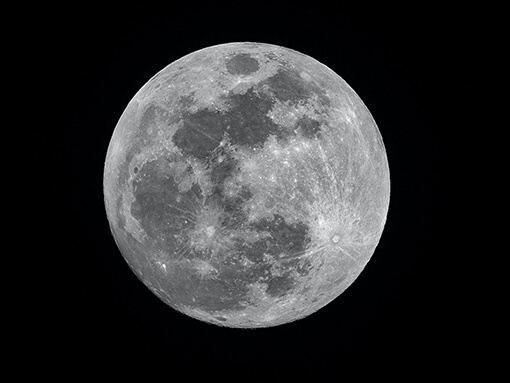
The moon is not a planet but rather a celestial body that orbits around a planet, known as a “satellite” [sæṭəlὰɪt] in English.
It is said that there are no moons around Mercury and Venus, but other planets have one or more moons orbiting around them, wandering about.
The difference between “gravity” and “gravitational force.”

Let’s take a moment to revise the difference between “gravity” and “gravitational force” here.
Firstly, there is a mutual pulling force between planets known as “gravitational force,” referred to as “gravitation” [grævɪteɪʃʌn] in English.
The law discovered by the British physicist Newton in the 17th century states that “every object attracts every other object with a force.”
And as for “gravity” [grævəti], it is the combined force of the Earth’s gravitational pull and the centrifugal force due to its rotation [rəʊˈteɪʃn].
What are the planets in the solar system made of?

Here, we will categorize the planets and have a look at them accordingly.
Please be prepared, as some chemistry-related vocabulary will be involved.
Sun
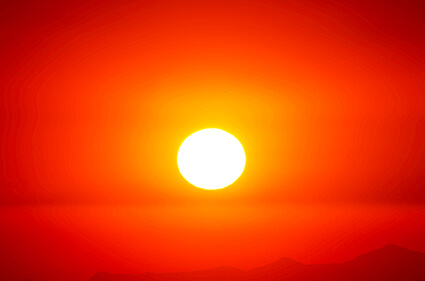
Let’s start with the Sun.
Categorically speaking, the Sun is not considered a “planet.”
A self-luminous celestial body is referred to as a “star,” and the Sun is the only star in the solar system.
The Sun, which is at the center of the solar system, is said to be composed of about 98% hydrogen [hάɪdrədʒən] and helium[híːliəm].
During the “nuclear fusion” reactions where hydrogen transforms into helium, an immense amount of energy is generated, continuously releasing intense light.
Mercury, Venus, Earth & Mars
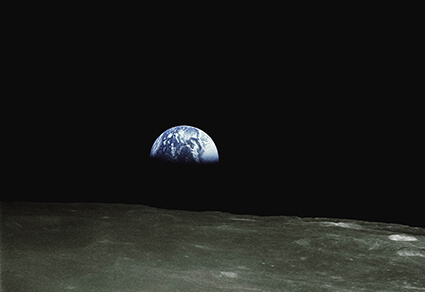
Following that, the four planets close to the Sun – Mercury, Venus, Earth, and Mars – are collectively referred to as “terrestrial planets” in English, based on their shared characteristics.
The term “terrestrial” [təréstriəl] means “composed of land,” indicating a proper solid surface and existence, much like Earth, characterized by a tangible solid presence.
Around the Sun, it’s incredibly hot, so basically, substances other than “metal” and “silicate” cannot exist as solids.

These components exist in only a tiny proportion in the nebulae of the solar system, so “terrestrial” planets are comparatively smaller in size than others.
Furthermore, beyond Mars, the outermost of the four planets, there is a scattering of asteroids [æstərɔɪd], forming a ring-like band known as the “asteroid belt.”
The warm region encompassing these four planets, including the “asteroid belt,” is particularly referred to as the “inner solar system” within the “solar system.” It is distinguished from the region beyond Jupiter, known as the “outer solar system.”
Jupiter & Saturn
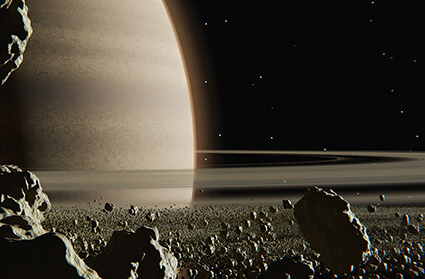
Next, outside the aforementioned “asteroid belt,” the planets orbiting around the Sun are Jupiter and Saturn.
Compared to “terrestrial planets” these planets are larger and just like the Sun, they are composed of gases like hydrogen and helium, therefore, they are also referred to as “gas giants.“
Uranus & Neptune
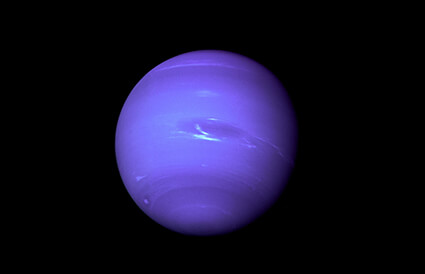
Lastly, Uranus and Neptune.
These two planets are often referred to as look-alikes, due to the similarities they share in terms of mass and size.
Like Jupiter and Saturn, they are enveloped in gases such as hydrogen and helium, however, being situated even farther from the Sun than Jupiter and Saturn, they get significantly reduced solar energy influence.
Consequently, their surface temperatures are considerably lower enough to cause freezing, leading to their classification as “ice giants.”
It is said that the reason why these two planets look blue (with Uranus being slightly fainter) is because the planetary surface contain “methane” [miːθeɪn], which absorbs red light, leading to this effect.
What lies beyond the solar system?
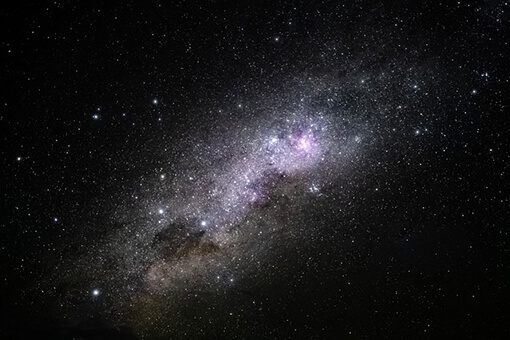
Beyond the solar system, the space is filled with “galaxies“.
Our solar system, including Earth, is said to be one of over 500 solar systems within the “Milky Way galaxy“.
Just as there are numerous solar systems within the Milky Way galaxy, there are also countless galaxies comparable in size to ours. This emphasizes that nature is truly boundless.
…Well, that’s about it for this time.

Sometimes, knowledge that rarely comes up in everyday conversations can suddenly prove useful one day if you take the opportunity to familiarize yourself with it.
So, let’s make sure we can name the planets in order from the Sun in English by taking this opportunity.
Thanks for having read though and I hope you have enjoyed it.
konkaz
You can read this blog post in Japanese from the link below.
👉 太陽系の惑星や宇宙に関する語彙の英語ボキャブラリーをインプットしよう!《英語汁 第30号》

